Abstract
The functional changes in splenic lymphoid populations from mice infected with T. brucei strain S42 were studied throughout the 3 weeks of infection. Within a week of infection, proliferation of B and T cells profoundly increased as shown by 3H-labelled thymidine incorporation and fluorescent staining of surface Ig; the spleen cells secreted high levels of both IgM and IgG immediately cells were put into culture; but with progressing infection this Ig production declined. The early effect on T cells was reflected by lack of responsiveness to PHA. B-cell potential was studied in low-density cultures treated with lipopolysaccharide (E. coli). Normal spleen cells proliferate extensively in these cultures with subsequent secretion of IgG as well as IgM. The ability to proliferate and produce Ig in response to LPS was severely depressed by day 7 and almost totally absent by day 12 of infection. Removal of T cells from the spleen cells obtained early in infection partly restored the response to LPS but as the infection neared its fatal end, B-cell potential appeared to become exhausted. Macrophages obtained from infected mice even early in infection profoundly depressed the ability of normal spleen cells to proliferate and secrete immunoglobulin in LPS cultures. The general immunodepressing effect of trypanosomes can be attributed to clonal exhaustion of B-cell potential caused by an undefined blastogenic stimulus from the parasites which may operate at least in part by the generation of suppressive T cells and macrophages.
Full text
PDF
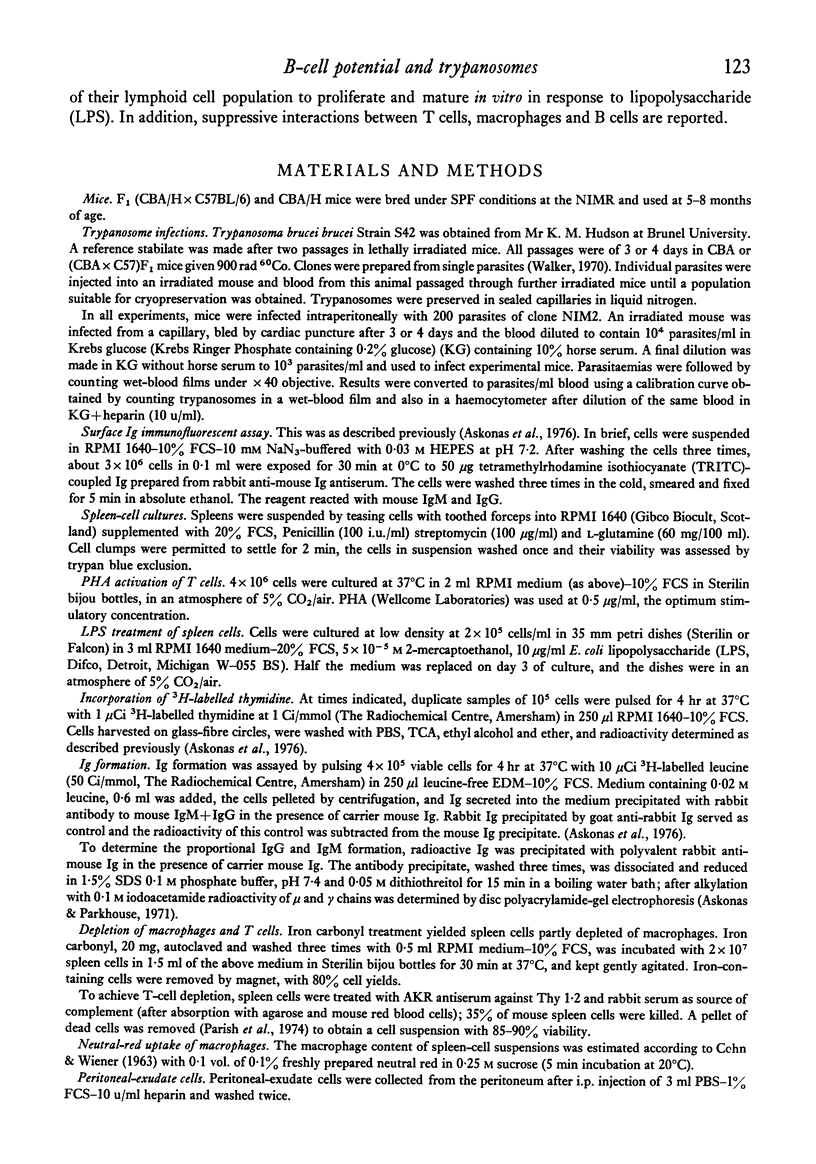
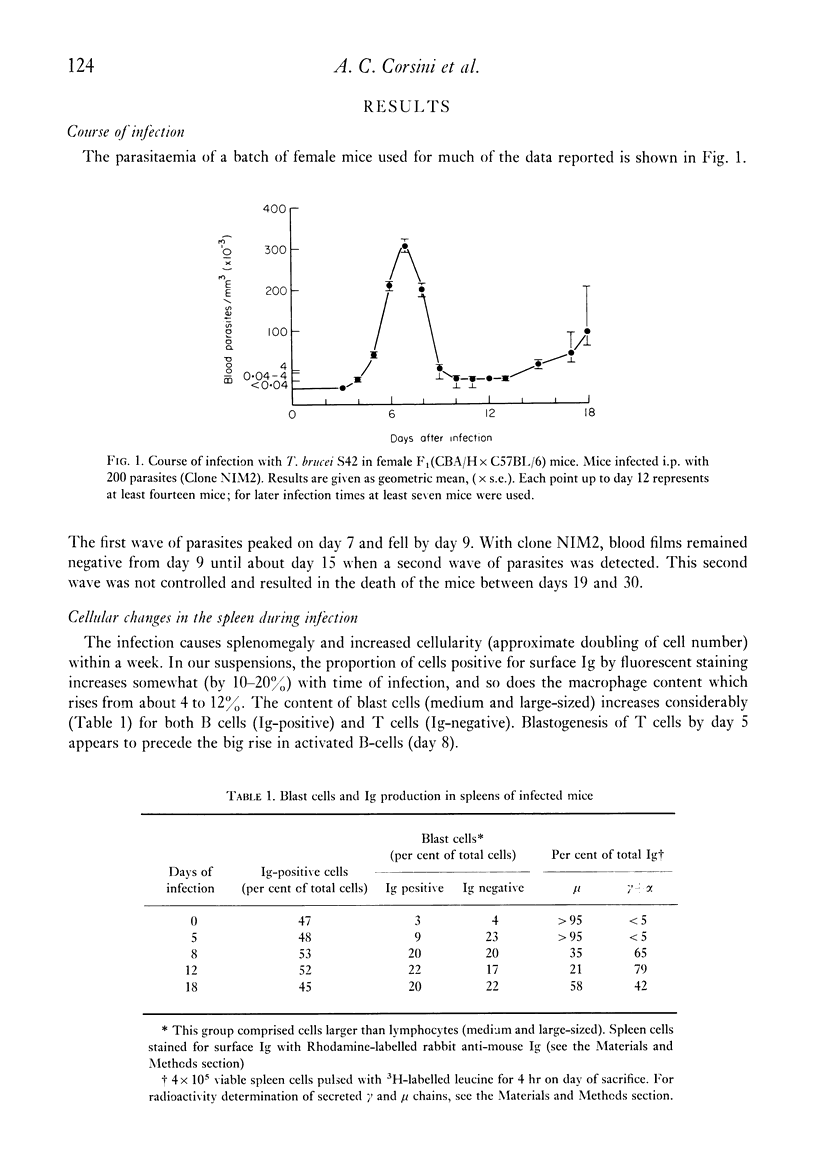
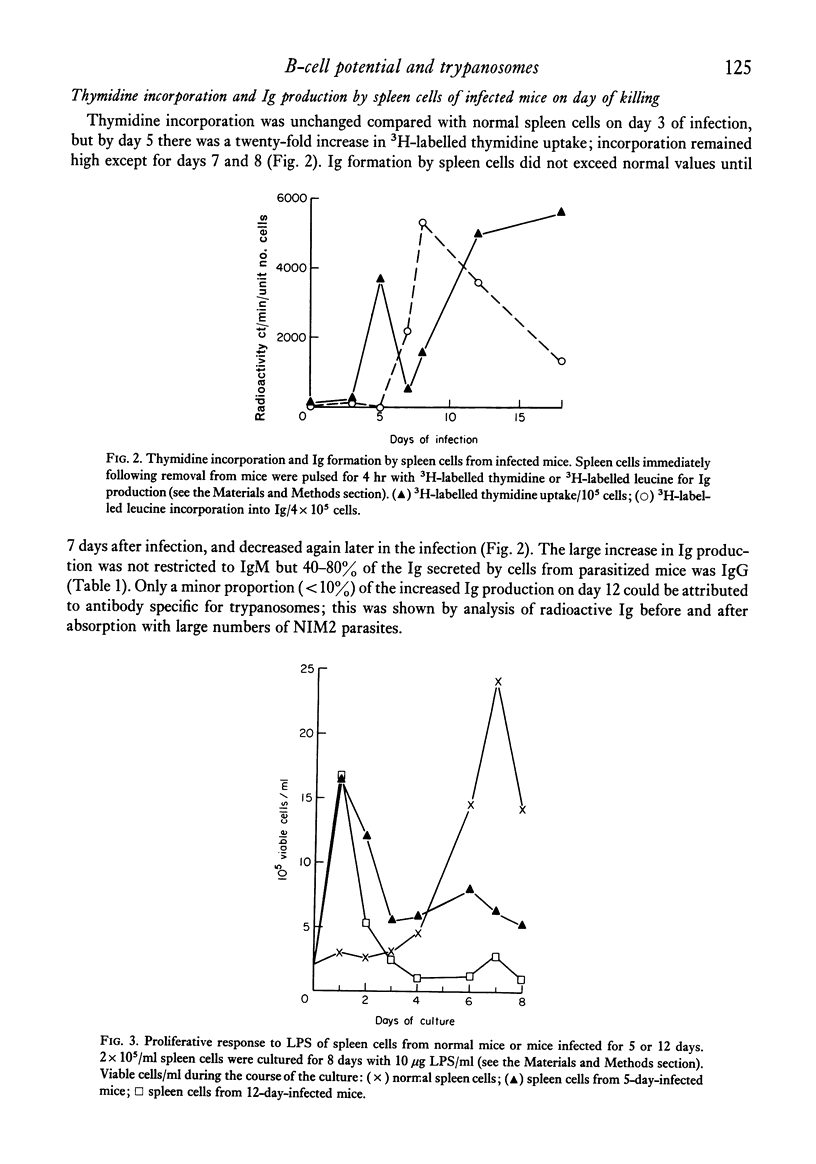
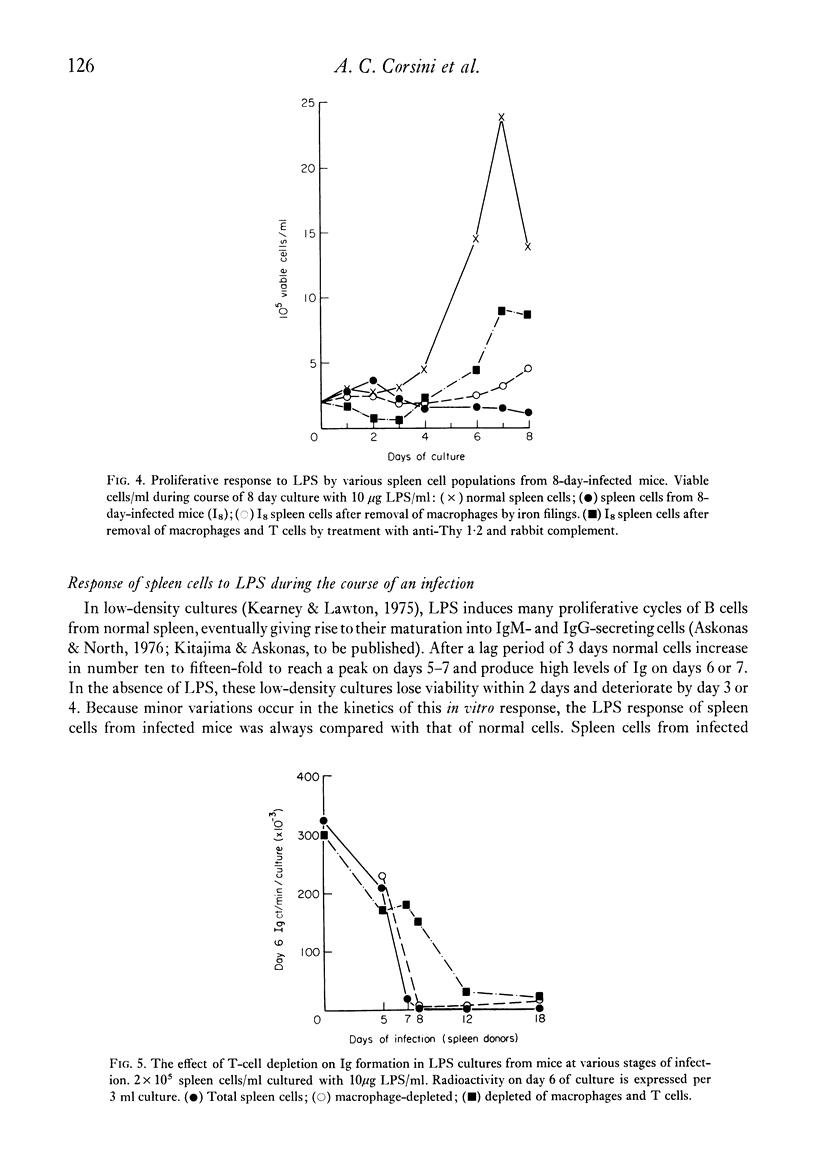

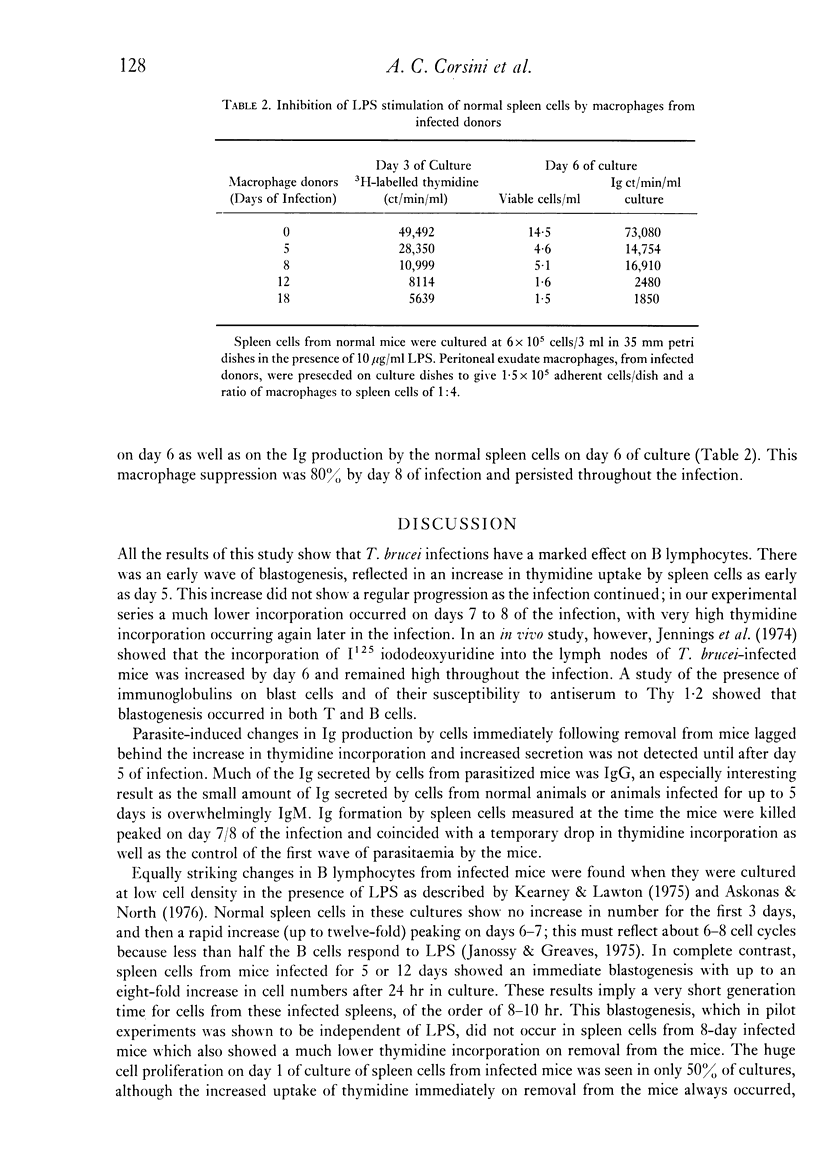
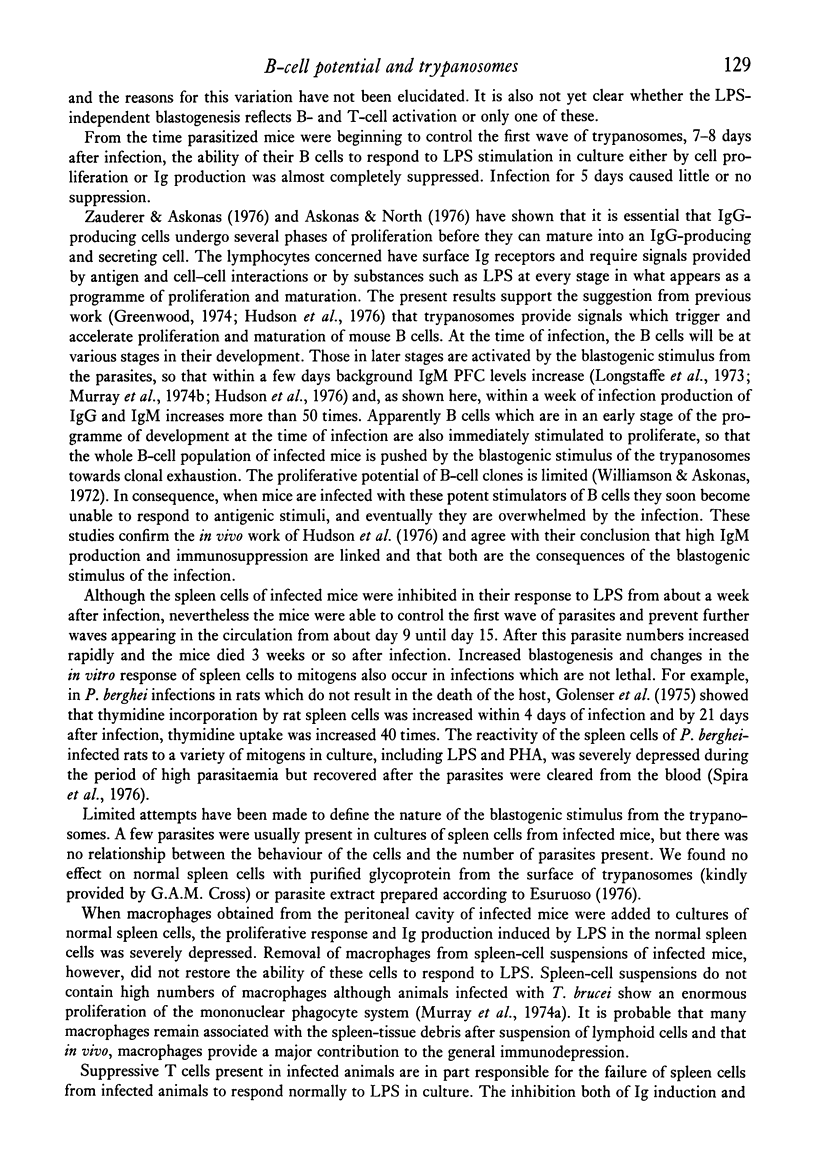

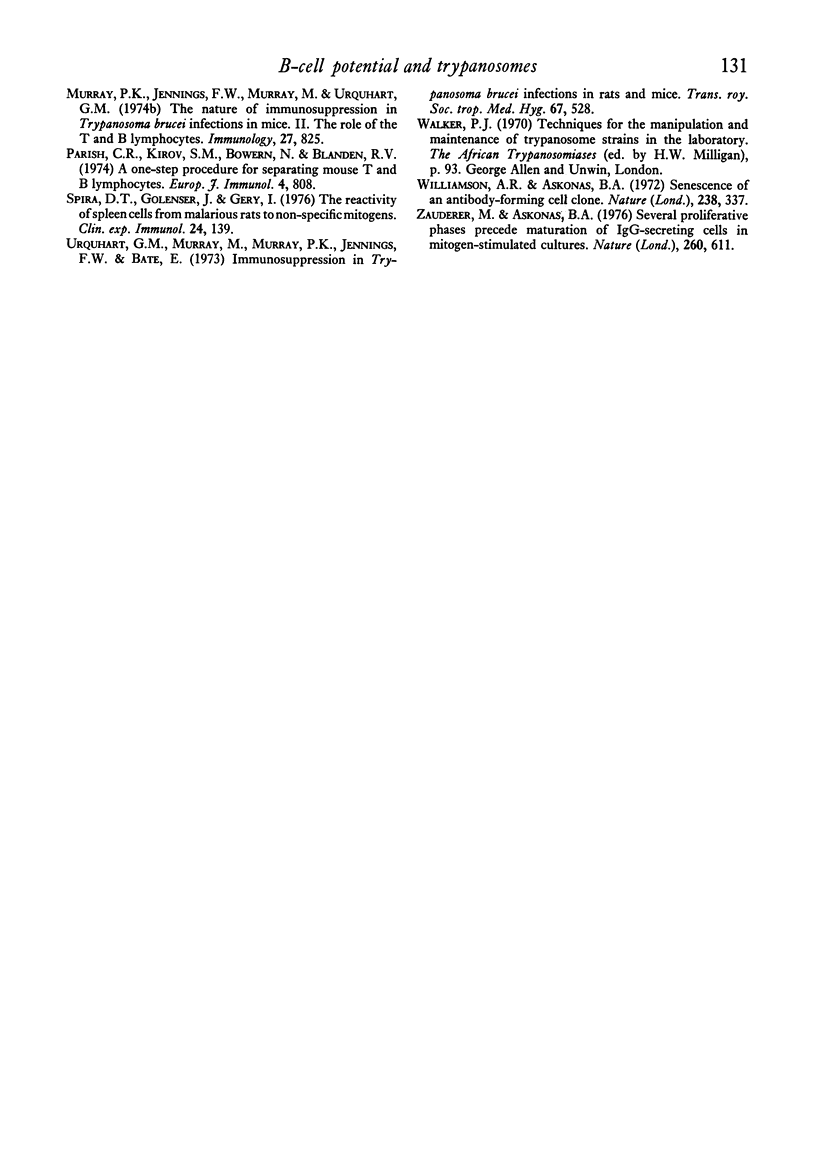
Selected References
These references are in PubMed. This may not be the complete list of references from this article.
- Ackerman S. B., Seed J. R. Immunodepression during Trypanosoma brucei gambiense infections in the field vole, Microtus montanus. Clin Exp Immunol. 1976 Jul;25(1):152–158. [PMC free article] [PubMed] [Google Scholar]
- Askonas B. A., Parkhouse R. M. Assembly of immunoglobulin M. Blocked thiol groups of intracellular 7S subunits. Biochem J. 1971 Jul;123(4):629–634. doi: 10.1042/bj1230629. [DOI] [PMC free article] [PubMed] [Google Scholar]
- Askonas B. A., Roelants G. E., Mayor-Withey K. S., Welstead J. L. Dual pathway of B lymphocyte differentiation in vitro. Eur J Immunol. 1976 Apr;6(4):250–256. doi: 10.1002/eji.1830060404. [DOI] [PubMed] [Google Scholar]
- Golenser J., Spira D. T., Zuckerman A. Dynamics of thymidine incorporation by spleen cells from rats infected with Plasmodium berghei. Clin Exp Immunol. 1975 Nov;22(2):364–371. [PMC free article] [PubMed] [Google Scholar]
- Goodwin L. G., Green D. G., Guy M. W., Voller A. Immunosuppression during trypanosomiasis. Br J Exp Pathol. 1972 Feb;53(1):40–43. [PMC free article] [PubMed] [Google Scholar]
- Houba V., Brown K. N., Allison A. C. Heterophile antibodies, M-antiglobulins and immunoglobulins in experimental trypanosomiasis. Clin Exp Immunol. 1969 Jan;4(1):113–123. [PMC free article] [PubMed] [Google Scholar]
- Hudson K. M., Byner C., Freeman J., Terry R. J. Immunodepression, high IgM levels and evasion of the immune response in murine trypanosomiasis. Nature. 1976 Nov 18;264(5583):256–258. doi: 10.1038/264256a0. [DOI] [PubMed] [Google Scholar]
- Janossy G., Greaves M. Functional analysis of murine and human B lymphocyte subsets. Transplant Rev. 1975;24:177–236. doi: 10.1111/j.1600-065x.1975.tb00169.x. [DOI] [PubMed] [Google Scholar]
- Kearney J. F., Lawton A. R. B lymphocyte differentiation induced by lipopolysaccharide. I. Generation of cells synthesizing four major immunoglobulin classes. J Immunol. 1975 Sep;115(3):671–676. [PubMed] [Google Scholar]
- Longstaffe J. A., Freeman J., Hudson K. M. Immunosuppression in trypanosomiasis: some thymus dependent and thymus independent responses. Trans R Soc Trop Med Hyg. 1973;67(2):264–265. doi: 10.1016/0035-9203(73)90169-7. [DOI] [PubMed] [Google Scholar]
- Luckins A. G. The immune response of zebu cattle infection with Trypanosoma congolense and T. vivax. Ann Trop Med Parasitol. 1976 Jun;70(2):133–145. doi: 10.1080/00034983.1976.11687107. [DOI] [PubMed] [Google Scholar]
- Murray P. K., Jennings F. W., Murray M., Urquhart G. M. The nature of immunosuppression in Trypanosoma brucei infections in mice. I. The role of the macrophage. Immunology. 1974 Nov;27(5):815–824. [PMC free article] [PubMed] [Google Scholar]
- Murray P. K., Jennings F. W., Murray M., Urquhart G. M. The nature of immunosuppression in Trypanosoma brucei infections in mice. II. The role of the T and B lymphocytes. Immunology. 1974 Nov;27(5):825–840. [PMC free article] [PubMed] [Google Scholar]
- Spira D. T., Golenser J., Gery I. The reactivity of spleen cells from malarious rats to non-specific mitogens. Clin Exp Immunol. 1976 Apr;24(1):139–145. [PMC free article] [PubMed] [Google Scholar]
- Urquhart G. M., Murray M., Murray P. K., Jennings F. W., Bate E. Immunosuppression in Trypanosoma brucei infections in rats and mice. Trans R Soc Trop Med Hyg. 1973;67(4):528–535. doi: 10.1016/0035-9203(73)90083-7. [DOI] [PubMed] [Google Scholar]
- Williamson A. R., Askonas B. A. Senescence of an antibody-forming cell clone. Nature. 1972 Aug 11;238(5363):337–339. doi: 10.1038/238337a0. [DOI] [PubMed] [Google Scholar]
- Zauderer M., Askonas B. A. Several proliferative phases precede maturation of IgG-secreting cells in mitogen-stimulated cultures. Nature. 1976 Apr 15;260(5552):611–613. doi: 10.1038/260611a0. [DOI] [PubMed] [Google Scholar]


